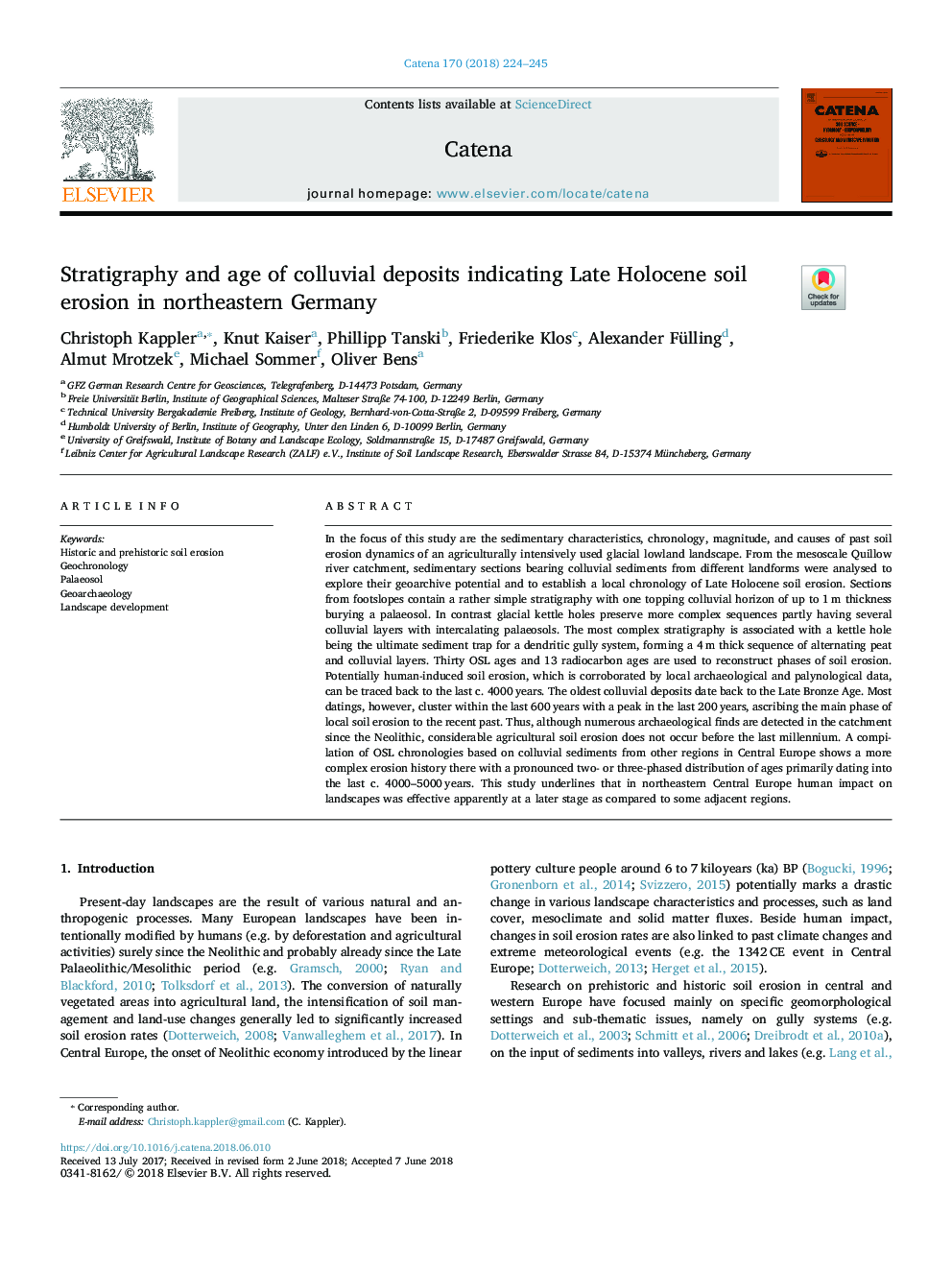| Article ID | Journal | Published Year | Pages | File Type |
|---|---|---|---|---|
| 8893402 | CATENA | 2018 | 22 Pages |
Abstract
In the focus of this study are the sedimentary characteristics, chronology, magnitude, and causes of past soil erosion dynamics of an agriculturally intensively used glacial lowland landscape. From the mesoscale Quillow river catchment, sedimentary sections bearing colluvial sediments from different landforms were analysed to explore their geoarchive potential and to establish a local chronology of Late Holocene soil erosion. Sections from footslopes contain a rather simple stratigraphy with one topping colluvial horizon of up to 1â¯m thickness burying a palaeosol. In contrast glacial kettle holes preserve more complex sequences partly having several colluvial layers with intercalating palaeosols. The most complex stratigraphy is associated with a kettle hole being the ultimate sediment trap for a dendritic gully system, forming a 4â¯m thick sequence of alternating peat and colluvial layers. Thirty OSL ages and 13 radiocarbon ages are used to reconstruct phases of soil erosion. Potentially human-induced soil erosion, which is corroborated by local archaeological and palynological data, can be traced back to the last c. 4000â¯years. The oldest colluvial deposits date back to the Late Bronze Age. Most datings, however, cluster within the last 600â¯years with a peak in the last 200â¯years, ascribing the main phase of local soil erosion to the recent past. Thus, although numerous archaeological finds are detected in the catchment since the Neolithic, considerable agricultural soil erosion does not occur before the last millennium. A compilation of OSL chronologies based on colluvial sediments from other regions in Central Europe shows a more complex erosion history there with a pronounced two- or three-phased distribution of ages primarily dating into the last c. 4000-5000â¯years. This study underlines that in northeastern Central Europe human impact on landscapes was effective apparently at a later stage as compared to some adjacent regions.
Related Topics
Physical Sciences and Engineering
Earth and Planetary Sciences
Earth-Surface Processes
Authors
Christoph Kappler, Knut Kaiser, Phillipp Tanski, Friederike Klos, Alexander Fülling, Almut Mrotzek, Michael Sommer, Oliver Bens,
